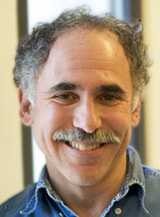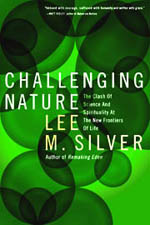|
published by Ecco/Harper Collins, 2006
|
|
Books
Presentations
Publications/Writings
Biography
Princeton Courses
|
Dear Professors George and Lee,
Although I wrote that my previous letter would be the final word on the topic of embryonic cells, I think a wrap-up would be useful for NRO readers. First, a few trivial points: (1) Andrew Sullivan -- who you dismiss abruptly as a "polemicist blogger," (after he called Professor George a fundamentalist) -- is an online columnist for Time magazine and a weekly television commentator for NBC. (2) Leon Kass has not publicly disavowed his belief, published most recently in 2002, that "a blastocyst is not, in a full sense, a human being." (Catholic theologian William E. May does say that, "Kass seems to be in contradiction to himself" in discussing this issue. if as you claim, Kass is prepared to retract the view he has expressed for two decades, a public disavowal from the man himself should be forthcoming. Further reading
Here are some indisputable facts concerning the writings and views of other scientists. (1) It is nowhere written in any current, standard textbook of embryology or developmental biology (including the one authored by Bruce Carlson) that a human embryo is a human "being." (2) Among the 52 professors of biology at Princeton University, not a single one agrees with your view that a human embryo is a human "being" and "radically different" from a bunch of embryonic stem cells in biological terms. (My offer of a case of Bordeaux to each of you still stands if you can convince just one of these professors to recant.) Now you can spin these facts any which way you want (and I am sure you will); you can present examples of token non-Princeton biologists who agree with you; but the consensus of the biomedical community is contrary to your claim.
So why should anyone trust your supposed understanding of scientific truth? In contrast to all Princeton biology professors, neither of you has a degree in science or medicine, and neither of you has ever published a single scientific research paper. To support your belief in the uniqueness of human embryos, you invent scientific-sounding phrases like "epigenetic primordia" and "internal active disposition" that have never been used by actual scientists in scientific publications. I would like to suggest that you may find it useful to sit-in on my Princeton course WWS320/MOL320, "Human Genetics, Reproduction, and Public Policy" to gain an appreciation for the difference between rhetoric and scientific analysis.
Finally, you expressed skepticism that the similar-looking pictures in my previous letter represented entities as "radically different" (your belief) as an embryo and a bunch of stem cells. I thought you might respond this way, and so I chose verifiable pictures from commercial photo suppliers. The top photo is captioned "coloured scanning electron micrograph (SEM) of a human embryo at the four cell stage, about 40 hours after fertilisation." (Credit: Dr G. Moscoso; Photo Researchers Inc. The bottom photo is a "coloured scanning electron micrograph (SEM) of human embryonic stem cells (HESCs)." (Credit: Steve Gschmeissner; Science Photo Library.
I would be glad to debate these issues with either or both of you before a live audience at a place and time of your choosing. But as far as comments "in print" go, I promise that this really is my final word.
Best regards,
Lee M. Silver, Ph.D.
Professor of Molecular Biology and Public Affairs
Princeton University
|
Hover over or click on books to order from Amazon.com
|

